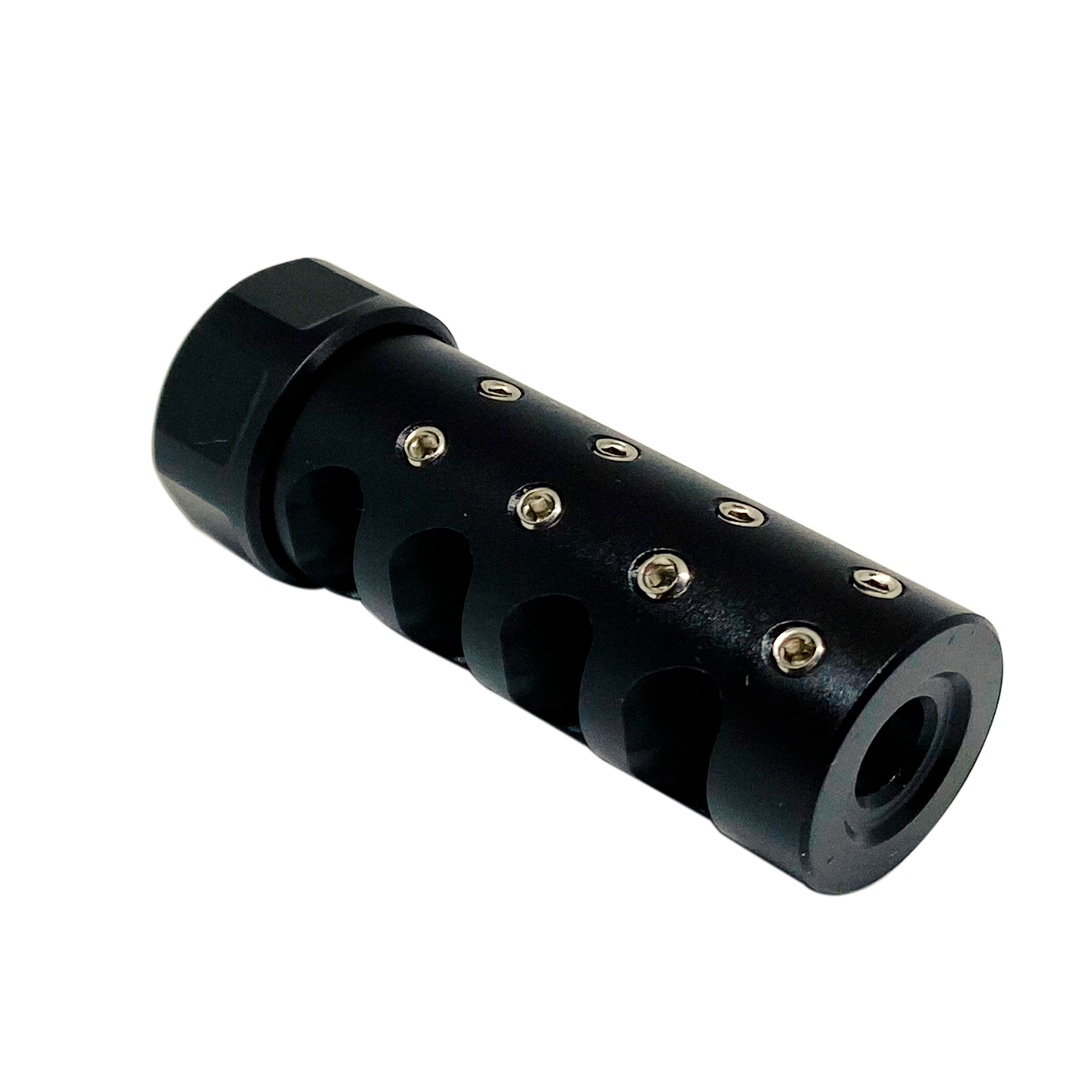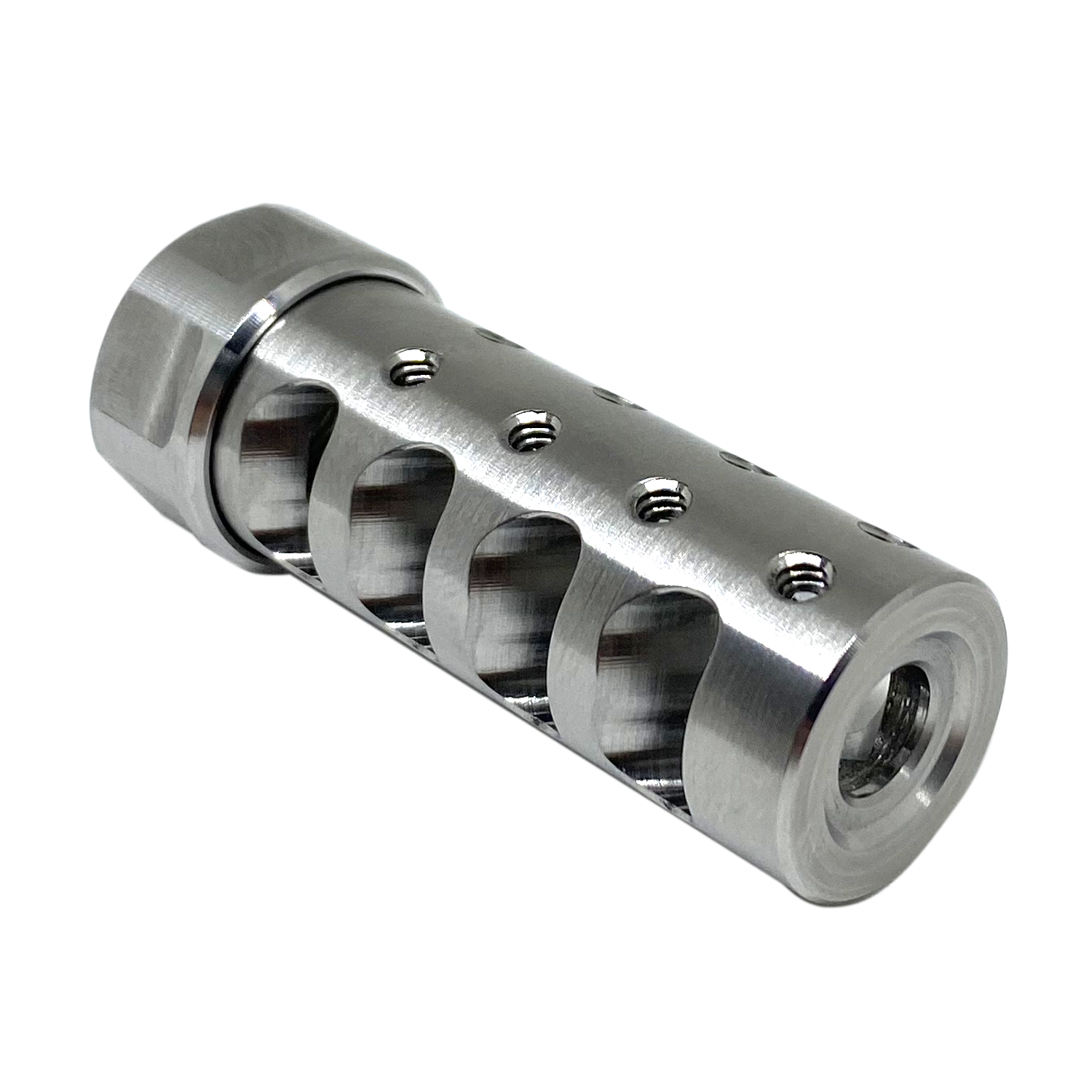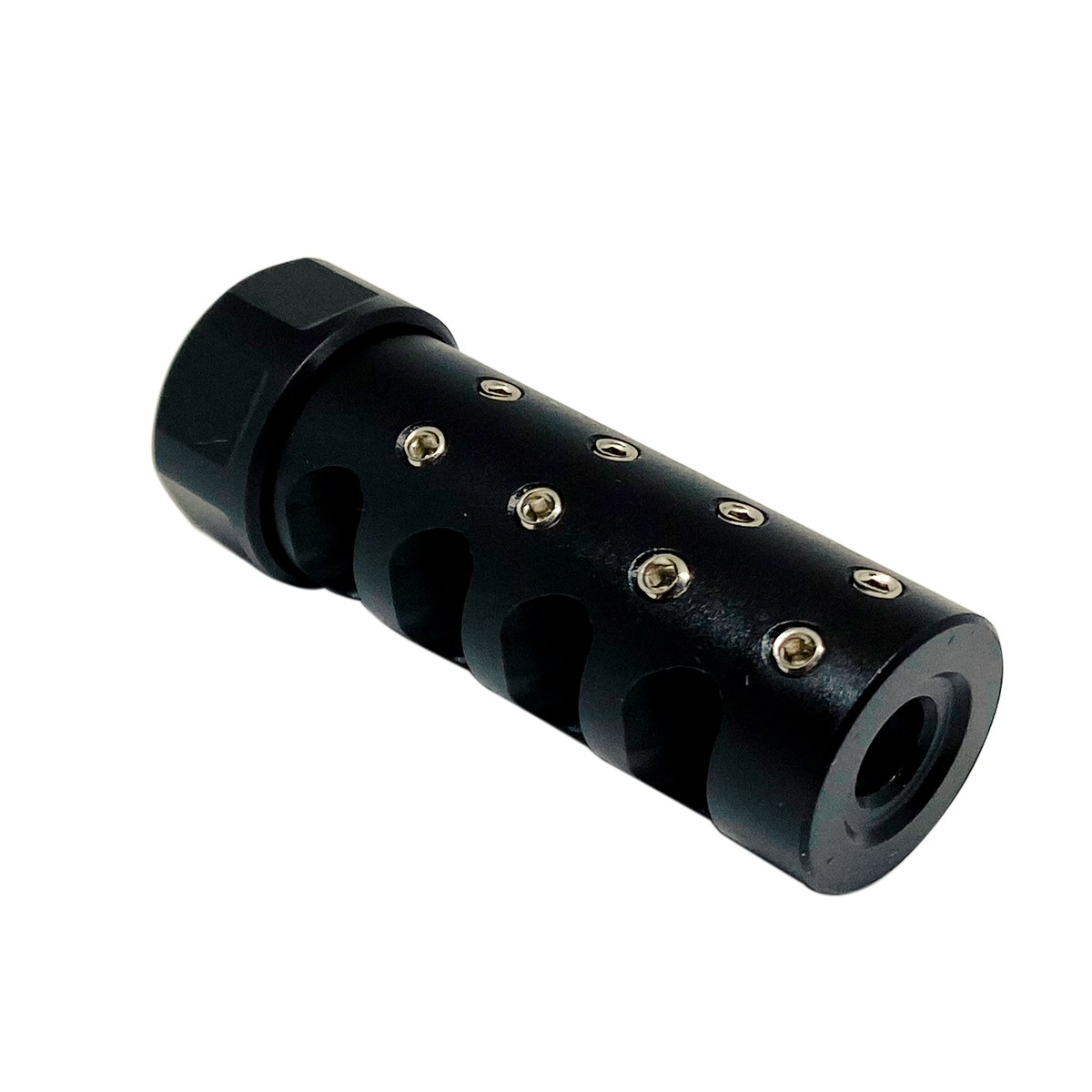

The Answer (Gen 3 Micro Bastard)*
At APA we are known for solving big recoil problems, not small ones. For years competitive shooters have asked us to develop a brake for the off-hand, run-and-gun, "Gas Gun" competitor. We found this little recoil problem was a little more dynamic than anticipated. We wanted to give these shooters our Bastard ports but that wasn't enough. The competitive shooter needs something really lightweight, but even more, tunable.
We developed the U.R.P. Adjustable Gas System. These aren't just randomly placed top ports. Every port is placed adjacent to the internal Bastard tooth where there is maximum pressure build-up. This makes the adjustable ports directionally effective. ALSO because of our self-timing Gen 2 system the brake is cant-able.
The unique tunable gas system combined with the trademark APA ports work together to achieve a sight picture that does not move when the rifle is fired. There are 8 directional gas ports that can be tuned to counteract your U.R.P. (unique recoil profile).
There are 256 combinations to keep your sights on target. To calibrate the brake to your U.R.P., start testing with all the gas screws installed. Pay attention to the movement of your red dot, irons, or crosshairs, and begin removing the gas screws as the recoil requires.
When the gas screws are removed on the right side, the rifle will be shifted left. For the opposite effect simply remove the screws on the left. The gas holes closer to the nut have a more dramatic effect and the ports closer to the brake crown have a lesser effect. When you find your U.R.P. combination, Threadtite your screws into place.
This brake is meant for smaller barrels from AR-15s to hunting rifles. We recommend a barrel diameter of .600-.750 inches for this brake.
Length is 2.20" and Weighs 2.2 oz
Made for a barrel diameters of .600" to .750".
Available in .223, 6.5mm, .308 (7mm) & 9mm (.350).
Available in 1/2x28, 9/16x24, M15x1, M13x.75 & M13x1.25
Each brake includes set screws, an Allen wrench, and a single-use Threadtite. Extra Gen 3 Screw Kits are available here.
-
Choose the .223 variant for any cartridge with a .223-.224" diameter bullet such as 5.56x45mm, 223 Remington, and 22-250 Remington.
-
Choose the 6.5mm variant for any cartridge with a .264" diameter bullet or smaller such as 6mm Creedmoor, 243 Winchester, 6.5mm Creedmoor, and 260 Remington.
-
Choose the 30 or 308 variant for any cartridge with a .308" diameter bullet or smaller such as 270 Winchester, 7mm Remington Mag, 28 Nosler, 7.62x51mm, as well as the 300 Winchester Magnum, 30-06 Springfield, and 308 Winchester.
-
Also, the 9mm/350 option is a great muzzle brake for the 350 Legend cartridge.
The M15X1 thread is a great option for a Sako muzzle brake upgrade.
Also, the M13x1.25 & M13x.75 thread is a great option for a Browning Hell's Canyon muzzle brake upgrade.

Maintenance
Routine maintenance of a muzzle brake is essential to ensure proper function and accuracy. Similar to a rifle barrel, a muzzle brake accumulates carbon deposits during use. Over time, these deposits build up in the ports—most significantly in the final port, as the first two are partially self-cleaning due to muzzle blast. Excessive carbon buildup can eventually obstruct the projectile path, resulting in bullet strikes. While this may appear as occasional flyers during general use, it can be detrimental in competitive applications where consistent point of impact is critical. In addition to bullet strikes, carbon accumulation may alter airflow through the ports, leading to shifts in accuracy or point of impact.
Caution: Do not use Lemishine, CLR, or any citric-acid-based cleaner on muzzle brakes. These agents will discolor the black nitride finish and void the product’s lifetime warranty.
Preventative Maintenance
The most effective method is preventative cleaning performed at the same interval as barrel maintenance (approximately every 200–400 rounds, with shorter intervals recommended for 6mm cartridges). Regular cleaning prevents significant fouling and reduces removal effort.
-
Soaking: Place the brake in a carbon cleaner such as BoreTech C4. On black nitride brakes, deposits typically release with minimal effort.
-
Brushing: If necessary, use a non-abrasive cleaning brush to assist with carbon removal. The black nitride finish is harder than common brush materials and will not scratch; however, raw stainless finishes are more susceptible to scratching and should not be cleaned with stainless steel or other hard-bristle brushes.
Heavy Carbon Removal
If cleaning is delayed beyond ~1,000 rounds, substantial carbon accumulation should be expected in the second and third ports. In these cases:
-
Extended Soak: Submerge the brake in BoreTech C4 for 24–48 hours.
-
Mechanical Assistance: Use a non-damaging pick to remove large carbon deposits.
-
Final Cleaning: Repeat the standard soaking and brushing procedure to remove remaining fouling.



